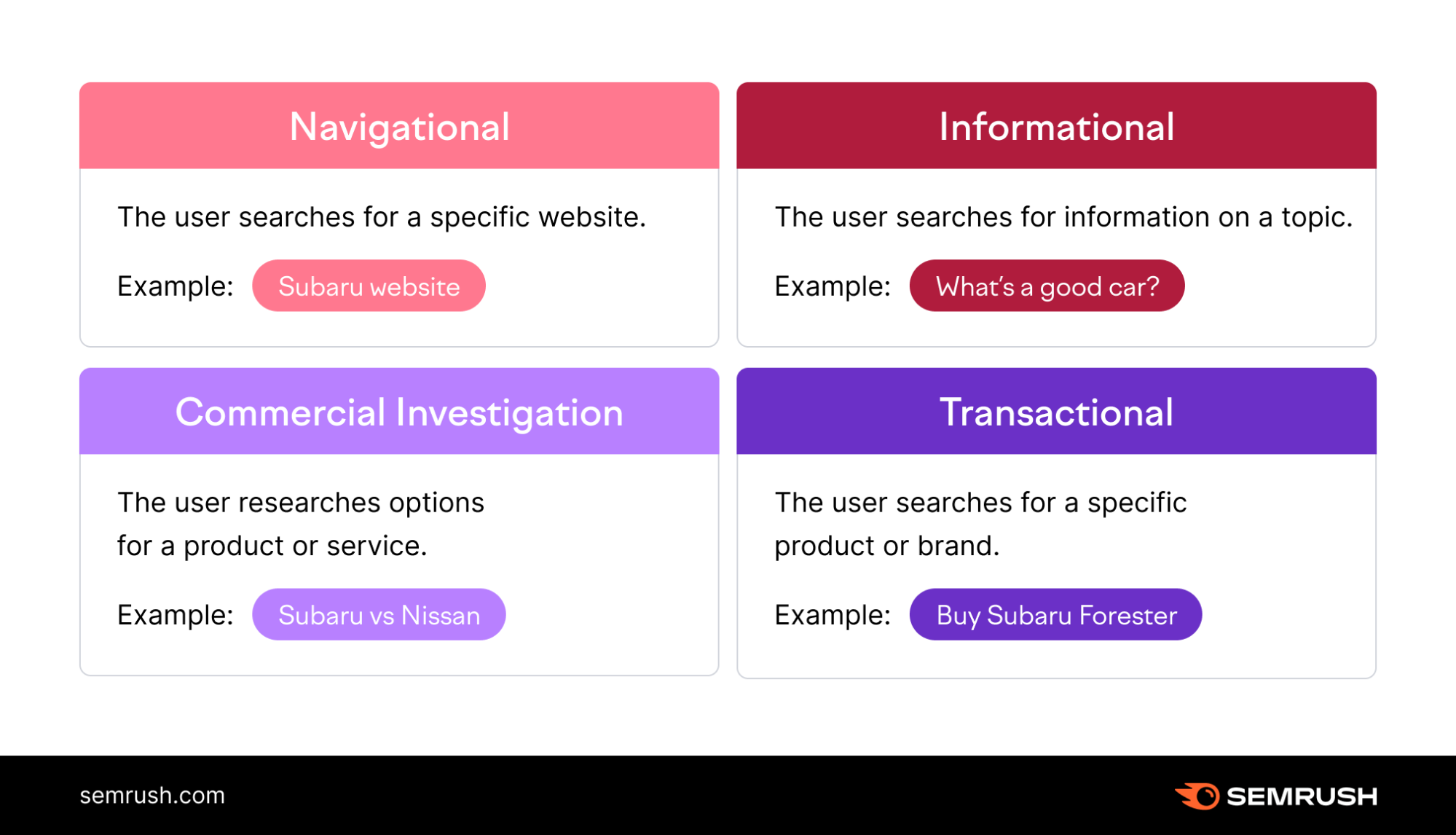Blitz News Digest
Stay updated with the latest trends and insights.
Search Intent Decoded: What Your Queries Really Mean
Uncover the secrets behind search intent and transform your queries into powerful insights that drive traffic and engagement!
Understanding Search Intent: How to Interpret User Queries
Understanding search intent is crucial for optimizing your content to meet the needs of users. Search intent refers to the reason behind a user's query and can be categorized into different types: informational, navigational, transactional, and commercial investigation. By interpreting these user queries accurately, you can tailor your content to address specific user needs. For instance, when a user types in "how to bake a cake," their intent is clearly informational, signaling that they are seeking guidance rather than looking to purchase a baking product.
To effectively interpret user queries, it's essential to analyze the keywords used and understand the context surrounding them. Tools like Google Trends and keyword research platforms can provide insights into popular search terms. Additionally, consider the use of long-tail keywords, which often indicate a more refined search intent. For example, a query like "best cake recipes for beginners" not only implies an informational intent but also suggests a demographic (beginners) that you can target with tailored content. By focusing on the nuanced variations in search intent, you can enhance user satisfaction and ultimately improve your site's SEO performance.

The Psychology Behind Search Queries: What Users Really Want
Understanding the psychology behind search queries is crucial for content creators looking to optimize their websites for better user engagement. When users type a query into a search engine, they often have specific goals in mind, whether seeking immediate answers, in-depth information, or solutions to their problems. This intent can generally be categorized into three types: informational, navigational, and transactional. Recognizing the differences among these intents allows creators to tailor their content effectively, enhancing the chances of meeting users' needs and boosting site visibility.
Moreover, the nuances of human behavior come into play when analyzing search queries. Users often exhibit cognitive biases that influence their search patterns, such as the confirmation bias, where they tend to seek information that aligns with their pre-existing beliefs. Understanding these tendencies can help website owners craft content that addresses not just the factual aspects of the users' queries but also resonates with their emotional and psychological needs. By doing so, content can be structured to provide not only answers but also a sense of connection and relevance, ultimately leading to higher user satisfaction and loyalty.
Decoding Search Intent: A Guide to Effective Content Creation
In the ever-evolving landscape of digital marketing, understanding search intent is crucial for content creators looking to drive traffic and engagement. Search intent refers to the underlying reason why a user conducts a search, and it can be broadly categorized into four types: informational, navigational, transactional, and commercial investigation. By identifying which type of intent aligns with your target audience, you can tailor your content to address their specific needs, thereby increasing its effectiveness and relevance.
To effectively decode search intent, consider utilizing tools such as keyword research and SERP analysis. Start by crafting content that answers common questions or solves problems within your niche. For example, when targeting informational intent, create comprehensive guides or how-to articles. Conversely, for transactional intent, focus on product pages or reviews that facilitate a purchase decision. By aligning your content strategy with the user's search intent, you can enhance visibility in search engine results and foster a loyal readership.